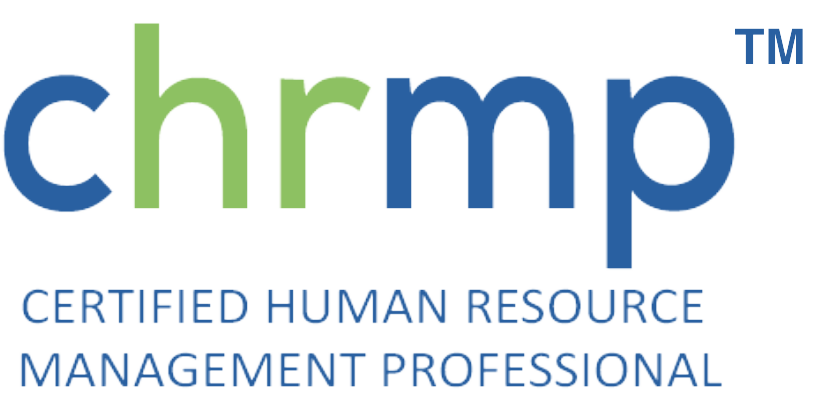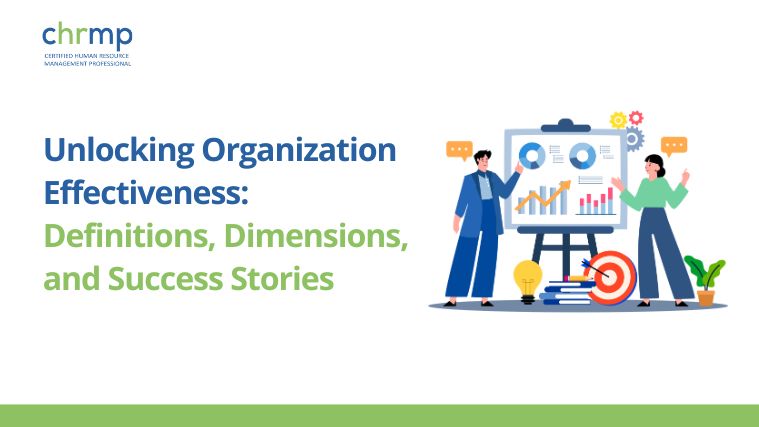For any business, be it a small organisation or a multinational corporation, succession planning is an essential aspect of the success of an organisation.
It’s all about identifying and developing potential leaders from among the current employees, thus ensuring that the right people are in place to take over when key individuals depart, whether that’s due to retirement, resignation, or unforeseen circumstances.
While succession planning may seem daunting, it’s also an opportunity to identify and develop new leaders, build a stronger team, and set your organisation up for long-term success.
This blog will look at the definition, importance, benefits, process, and best practices for succession planning.
Let’s dive right in!
What is Succession Planning?
Succession planning is the process of identifying and developing new potential leaders within an organisation to fill critical roles when current leaders leave, whether that’s due to retirement, resignation, or unexpected circumstances.
Succession planning aims to ensure that the organisation can continue to operate unperturbed and achieve its goals even after key individuals leave, without any hitch in transitioning from old leadership to new one.
Succession planning typically involves the assessment of skills, abilities, productivity and performance of current employees, identifying potential future leaders, and creating training and development plans to help these individuals acquire the knowledge and experience needed to succeed in their new roles.
Effective succession planning can help organisations build a strong bench of leaders and eliminate the risks associated with leadership transitions.
Why is it Important?
Succession planning is a process that involves identifying, developing and nurturing future leaders within an organisation to take over when current leaders depart.
It is essential because it ensures continuity of operations while eliminating risks associated with leadership transitions and helps build a strong leadership pipeline.
By providing employees with training and development opportunities, succession planning can enhance their career growth and job prospects, which can help attract and retain top talent.
Finally, effective succession planning is one of the critical elements of organisational success in today’s rapidly changing business scope.
Benefits of Succession Planning
Here are five benefits of succession planning:
1. Ensures Business Continuity:
Succession planning ensures an organisation is always prepared for potential leadership transitions and has a pipeline of future leaders to maintain business continuity and eliminate risks associated with leadership transitions.
Organisations can minimise the impact of unexpected departures by identifying and providing training and developing opportunities for potential successors and ensure that critical roles get filled with qualified and able leaders.
2. Retains Top Talent:
Better decisions and policies are expected if top leadership consists of talented and qualified people, which is bound to translate into organisational success.
Succession planning helps organisations retain top talent by providing employees with clear career paths and development opportunities.
When employees see a clear path for growth and development within an organisation, they are more likely to stay put in it and contribute to its long-term success.
3. Improves Engagement and Morale:
Succession planning can improve engagement and morale by demonstrating that the organisation is investing in its employees’ development, advancement and welfare.
On being provided with opportunities for growth and development, employees feel valued, which improves employee engagement, which can positively impact their productivity, performance and job satisfaction.
4. Supports Strategic Planning:
Alignment of talent development with business objectives is achieved by efficient succession planning.
By identifying key positions, the skills and competencies required in incumbent candidates for future success, organisations can develop a talent strategy that supports their long-term goals and objectives.
5. Reduces Recruitment Costs:
Succession planning can reduce recruitment costs by providing batches of internal candidates in the pipeline for key positions.
By training and developing internal candidates appropriately for critical positions, organisations can save time and money on external recruitment efforts and ensure that candidates are a perfect fit, culture-wise, for the organisation.
To summarise, succession planning is critical, like groundwork essential for success.
It also provides numerous benefits for organisations, including business continuity during leadership transitions, talent retention, improved engagement and morale, strategic alignment, and cost savings.
The Four Step Process of Succession Planning Explained
Below is an explanation of the four basic steps involved in succession planning:
Step 1: Identification of Key Positions
Identify the key positions within an organisation that need to be filled in the event of a leadership transition.
These positions could be executive-level roles, department managers, or other critical functions that are necessary for the organisation’s success, as well as day-to-day operations.
It’s essential to identify these positions early on to make sure that the organisation is well-prepared for any potential leadership changes.
Step 2: Assess Current Talent
Once the key positions have been identified, the next step is to assess the existing talent within the organisation and who could fill these roles.
This involves reviewing performance evaluations, conducting interviews with employees, or using other assessment tools to evaluate an employee’s skills, knowledge, and experience.
It’s essential to identify potential successors who have the necessary skills and experience to succeed in the role and those who have the desire and motivation to take on a leadership position and plan appropriate training and development opportunities.
Step 3: Develop Succession Plans
Once potential successors have been identified, the next step is to develop individualised succession plans for each employee.
Providing them with role specific-training and development opportunities, assigning them to mentorship programs, and exposing them to other functions of the organisation to broaden their horizons.
These training and development programs must be tailor-made and a perfect fit for each employee’s specific needs and career goals to ensure that they are motivated and engaged in the process.
Step 4: Monitoring and Evaluation of Progress
The final step in the succession planning process is monitoring and evaluating the progress of potential successors over time.
Reviewing performance metrics, providing feedback and coaching, or conducting regular check-ins to ensure that the employee is on track to meet their career goals are some of the important steps in monitoring and evaluating the success of the potential leadership candidates.
Flexibility and adjustment of the succession plan, as and when needed depending upon the changes in the organisational needs or the employee’s performance, is a critical aspect to be kept in mind.
The succession planning process is a continuous cycle that involves identifying key positions, assessing current talent, developing tailor-made, employee-specific succession plans, and monitoring their progress over time.
Following these steps, organisations can build a solid talent base and future-ready leaders in the pipeline to navigate leadership transitions and eliminate business disruption risks and succeed in the face of all odds.
Top 5 Succession Planning Metrics Every HR Professional Must Know
Below are mentioned five succession planning metrics that every HR professional should be aware of:
Replacement Planning Rate:
The replacement planning rate is the percentage of key organisational positions identifying potential successors.
A high replacement planning rate indicates that the organisation has a robust succession planning program and is prepared for potential leadership transitions.
HR professionals should regularly track this metric to ensure the organisation identifies and develops potential successors for all critical positions.
But talent retention and a high replacement and planning rate are two aspects of succession planning that could be at loggerheads with each other sometimes.
Therefore a prudent evaluation of the critical situation is essential where precocious talent has to be retained as well, as the organisation has to be future-ready with trained potential leaders.
Also, the management must go easy with the replacement rate and be generous.
Succession Pipeline Depth:
This refers to the number of potential successors identified for each key position.
A deep succession pipeline indicates that there are multiple employees who are ready to step into a leadership role as and when needed.
HR professionals should track this metric to ensure the organisation has a strong bench of potential leaders prepared to assume new responsibilities and leadership.
Succession Readiness:
Succession readiness is the percentage of key positions for which the organisation has identified a potential successor who is ready to step into the role immediately.
This metric measures the organisation’s preparedness for unexpected leadership transitions.
HR professionals or the relevant management should monitor succession readiness to ensure the organisation is well-prepared to navigate any potential disruptions due to leadership transitions.
Talent Retention:
Talent retention measures the percentage of high-potential employees who remain with the organisation over a long period.
This metric indicates employee engagement and the effectiveness of the organisation’s succession planning program.
An efficient and effective succession planning program would ensure that the organisation is retaining its top talent and providing them with development opportunities to support their career growth and still be ready with multiple, aptly groomed and trained, future-ready potential leaders to tide over any leadership transition event.
Promotion Rates:
Promotion rates measure the percentage of employees promoted into leadership positions over time.
This metric provides insight into the organisation’s ability to develop and promote internal talent and eliminate stagnation in their career growth.
Promotional rates should be tracked to ensure that the organisation provides employees with ample opportunities to grow and advance in their careers within the company, improving engagement and retention.
By tracking these succession planning metrics, HR professionals can ensure that their organisations have a strong pipeline of future leaders and are prepared for potential leadership transitions.
Succession Planning Best Practices
Here are some best practices for succession planning:
1. Start Early:
Succession planning should start as early as possible, ideally as soon as an employee first joins the organisation or starts to show signs of potential performance above par. This allows the organisation to identify high-potential employees and train them for future leadership roles.
2. Involve Senior Leadership:
Senior leaders should be involved in the succession planning process to ensure that they are aligned with the organisation’s talent development strategy and to provide input on key leadership competencies and skills required for future success.
3. Focus on Diversity and Inclusion:
Succession planning should focus on developing a diverse and inclusive pipeline of future leaders. This includes identifying and developing talent from underrepresented groups, providing equal opportunities for career development, and creating an inclusive culture that supports diverse perspectives.
4. Use a Data-Driven Approach:
Succession planning should be based on data and analytics, such as performance metrics, assessment results, and workforce demographics. This enables organisations to identify skill gaps, development needs, and potential barriers to career advancement.
5. Develop Individualised Succession Plans:
Succession plans should be tailored to each employee’s needs and career goals. This includes providing targeted training and development opportunities, assigning mentors, and providing exposure to different parts of the organisation to broaden their experience.
6. Monitor and Evaluate Progress:
Succession planning is a continuous process that requires ongoing monitoring and evaluation of progress. This includes regular check-ins with potential successors, tracking key metrics, and adjusting the succession plan based on changes in the organisation’s needs or the employee’s performance.
By following these best practices, organisations can develop a strong pipeline of future leaders and ensure that they are prepared for potential leadership transitions.
Challenges in Succession Planning
While there may be various challenges associated with succession planning, here are three common ones:
1. Identifying and developing suitable talent
One of the primary challenges in succession planning is accurately identifying individuals with the potential to step into critical leadership roles in the future. It requires a thorough understanding of the organization’s long-term goals and the skills, knowledge, and qualities required for success in those positions. Identifying and nurturing talent within the organization, providing them with the necessary training, mentorship, and growth opportunities, can be a complex and time-consuming process.
2. Overcoming resistance to change
Succession planning often involves significant changes within an organization, such as transitioning from one leader to another or redefining roles and responsibilities. Resistance to change can arise from various sources, including current leaders who may be reluctant to relinquish control or employees who fear uncertainty or potential disruptions. Overcoming this resistance requires effective communication, transparency, and a well-defined transition plan that addresses concerns and engages key stakeholders throughout the process.
3. Balancing short-term needs with long-term planning
Succession planning requires striking a balance between addressing immediate operational needs and investing in the long-term development of future leaders. Organizations often face pressures to fill critical positions quickly, especially during unexpected leadership vacancies. This can lead to compromises in the selection and development process, potentially overlooking suitable candidates or rushing their preparation. Maintaining a strategic focus on long-term planning while effectively managing immediate talent needs is crucial for successful succession planning.
Succession Planning and Diversity
Succession planning and diversity are interconnected for inclusive organizations. Integrating diversity into succession planning promotes equal opportunities, innovation, and better decision-making. It breaks down biases, fostering an inclusive environment.
Organizations can achieve this by setting transparent selection criteria, offering development programs, and providing bias training. Embracing diversity in succession planning builds a pipeline of diverse leaders who reflect the world we live in.
To effectively integrate diversity into succession planning, organizations should establish transparent and objective selection criteria, offer mentorship and development programs for underrepresented groups, and provide unconscious bias training for decision-makers.
Frequently Asked Questions
What is succession planning?
Succession planning is the process of identifying and developing employees who have the potential to take on key leadership roles within an organisation.
Why is succession planning important?
Succession planning is vital because it enables organisations to prepare for potential leadership transitions, retain top talent, and ensure they have a pipeline of future leaders to support long-term success.
Who is responsible for succession planning?
Succession planning is typically the responsibility of the HR department, but it should involve input and participation from senior leadership and other stakeholders within the organisation.
How do you identify potential successors?
Potential successors can be identified through a variety of methods, such as performance reviews, leadership assessments, and discussions with managers and other stakeholders.
How do you develop individualised succession plans?
Individualised succession plans should be tailored to employees’ needs and career goals. This can involve providing targeted training and development opportunities, assigning mentors, and providing exposure to different parts of the organisation to broaden their experience.
How do you measure the success of a succession planning program?
Succession planning programs can be measured by tracking key metrics such as replacement planning rate, succession pipeline depth, succession readiness, talent retention, and promotion rates. By following these metrics over time, organisations can evaluate the effectiveness of their succession planning efforts and make adjustments as needed.
Conclusion
In conclusion, succession planning is a critical process that enables organisations to identify and develop a pipeline of future leaders.
By following a structured approach that involves identifying key positions, assessing potential successors, developing and implementing individualised plans, and monitoring progress, organisations can ensure that they are prepared for possible leadership transitions and have a strong bench of talent to support long-term success.
HR professionals play a vital role in the succession planning process. They should ensure they know the key metrics and best practices to help their organisations develop a robust succession planning program.
Effective succession planning can help organisations retain top talent, improve engagement, and drive business performance.






